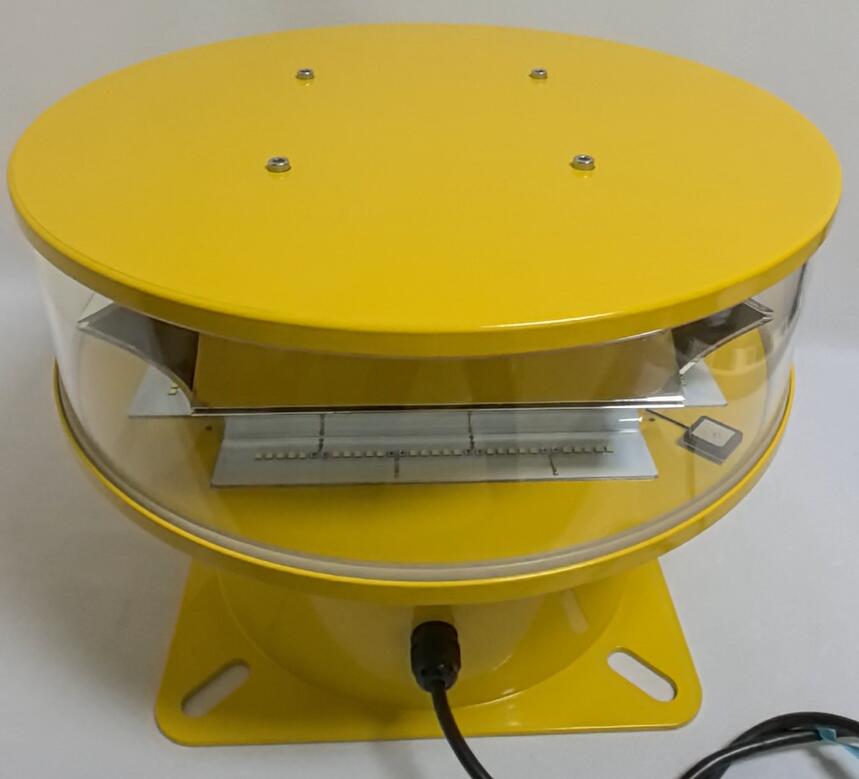Posted: 2025-04-11
Introduction to FAA Obstruction Marking and Lighting Standards
The Federal Aviation Administration (FAA) obstruction marking and lighting regulations form the backbone of aviation safety in U.S. airspace. These critical standards ensure all potential aerial hazards - from skyscrapers to wind turbines - are properly identified to prevent collisions. As urban development continues vertically and renewable energy projects expand, compliance with FAA obstruction marking and lighting requirements has never been more vital.
The Evolution of FAA Obstruction Marking and Lighting Guidelines
Historical Context
The FAA obstruction marking and lighting standards trace their origins to the Air Commerce Act of 1926, with significant updates occurring:
1970s: Introduction of specific light intensity categories
1990s: Implementation of LED technology standards
2010s: Adoption of new wind turbine marking requirements

Current Regulatory Framework
The FAA obstruction marking and lighting requirements are primarily detailed in:
Advisory Circular (AC) 70/7460-1L
14 CFR Part 77
FAA Order JO 7400.2L
Key Components of FAA Obstruction Marking and Lighting Systems
Marking Requirements
Paint Schemes
Aviation orange and white alternating bands
Specific width and pattern requirements
Contrast ratios for maximum visibility
Structural Markers
Spherical markers for cables
Flags for temporary obstructions
Retroreflective materials for nighttime visibility
Lighting Specifications
Light Types
Red obstruction lights (L-864)
Medium-intensity white strobes (L-865)
High-intensity white strobes (L-856)
Placement Guidelines
Top-mounted primary lights
Intermediate level lighting for tall structures
Spacing requirements based on structure height
Special Applications in FAA Obstruction Marking and Lighting
Wind Turbine Marking
Unique challenges addressed through:
Special lighting configurations
Reduced intensity options where appropriate
Aircraft Detection Lighting Systems (ADLS)
Urban Skyscraper Solutions
Innovative approaches including:
Architecturally integrated lighting
Dual lighting systems (red/white)
Light pollution mitigation techniques
Compliance and Enforcement of FAA Obstruction Marking and Lighting Rules
The Determination Process
Obstruction Evaluation
FAA Form 7460-1 submission
Aeronautical studies
Determination notices
Height Thresholds
200 feet AGL general threshold
Lower near airports
Special use airspace considerations
Enforcement Mechanisms
NOTAM issuance for non-compliant structures
Potential civil penalties
Pilot reporting systems
Technological Advancements in FAA Obstruction Marking and Lighting
Smart Lighting Systems
Automatic brightness adjustment
Remote monitoring capabilities
Fault detection and reporting
Sustainable Solutions
Solar-powered options
Energy-efficient LED technology
Reduced maintenance designs
Future Developments
Radar-enhanced marking systems
Drone-based inspection technologies
AI-powered monitoring solutions
Best Practices for Implementing FAA Obstruction Marking and Lighting
Design Considerations
Early coordination with FAA
Structure-specific solutions
Environmental factors
Installation Tips
Certified technicians
Proper spacing calculations
Redundancy planning
Maintenance Protocols
Regular photometric testing
Cleaning schedules
Spare parts inventory
The FAA obstruction marking and lighting standards represent a dynamic system that continuously evolves to meet new aviation challenges. As our national airspace becomes increasingly complex, these regulations ensure safe coexistence between ground structures and aircraft operations. Compliance isn't just regulatory - it's a fundamental component of aviation safety that protects lives and property.